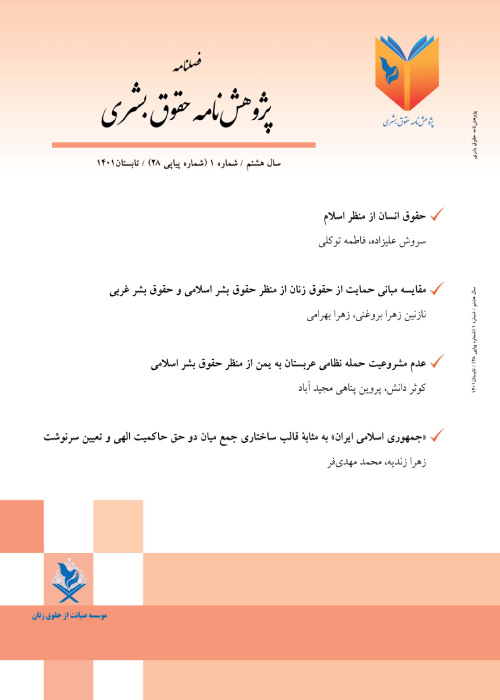Human Rights system in point of view of Mulla sadra‘s substantial motion
The human rights system is a prominent structure that it’s foundation was laid with the descent of human being to the earthen world,and with the help of divine bases ,the teachings of righters and rational schools in the length of history is created and it’s moving towards evolution. This sturdy system is in the result of the countless struggles of it’s founders that with the help of the sprit of the bases of revelatory teachings ,school of natural law and the concept of justice and dignity ,have sacrificed their lives for it’s stability. From the point of view of philosophical nature ,human rights as a universal concept is among the philosophical secondary intelligible. The present article is the result of an attempt to make a context for the design of principles and goals of human rights system and the theory of substantial motion to achieve a common understandings between them. This theory expresses the continuous renewal of the existence of substance and permanent becoming (devenire in Latin) of the entity of the universe towards abstraction and pure actuality. The reason for approximation of these two systems of thought is that they are based on the elements of the universe of possibility ,namely man and the nature around it. On the other hand,these two areas of thought in universality, graduality , perfectionism, intensifying, wishing excellence, and basing on rationality are unanimous. In both fields of thought ,the origin of motion is the first matter(primal matter) of the material world, that is , the indeterminate matter,and the end is pure actuality and abstraction so the actualization of ideal transcendent goals. In mulla sadra’s transcendental theosophy ,there is a theory called “lobs after lobs” which states that the form and matter of one being in the arc of ascent ,becomes the matter of another form. This theory can be observed by studying statute structure of international human rights ,so that the conclusion of international conventions after issuance of non-binding declarations on the same issues ,without damaging to their credit ,indicates another adaptation. for example: conclusion of international covenants (1966) after the issuance of declaration of human rights (1948) or the conclusion on the rights of child (1989) after the issuance of declaration of rights of child(1959).
- حق عضویت دریافتی صرف حمایت از نشریات عضو و نگهداری، تکمیل و توسعه مگیران میشود.
- پرداخت حق اشتراک و دانلود مقالات اجازه بازنشر آن در سایر رسانههای چاپی و دیجیتال را به کاربر نمیدهد.


